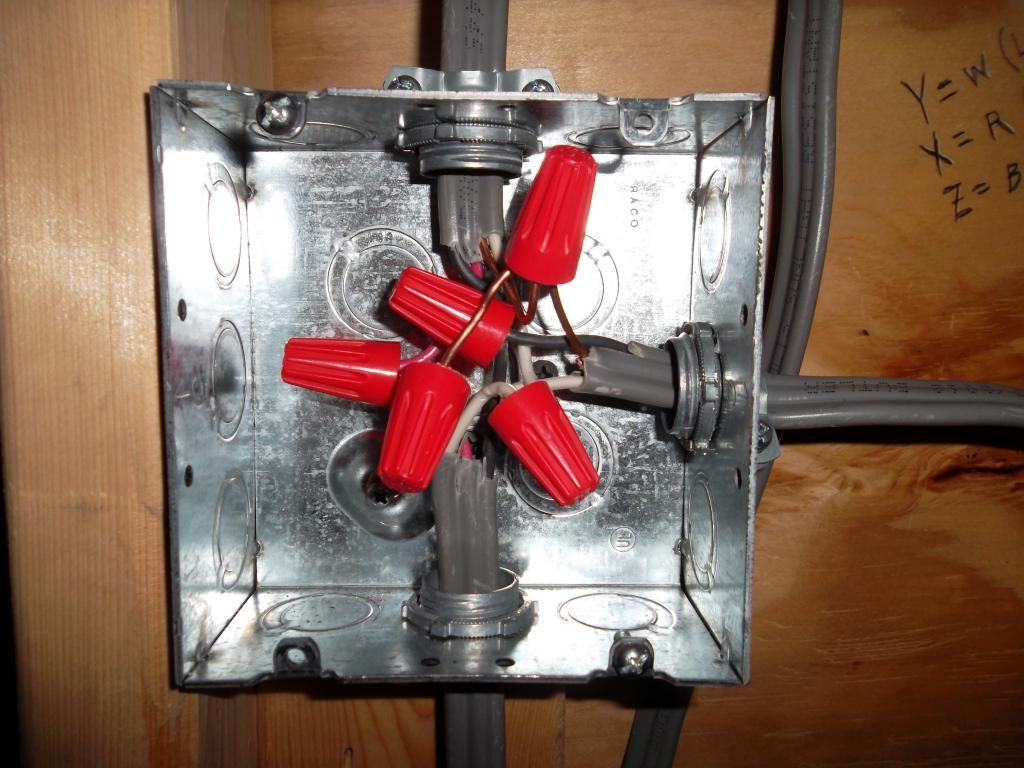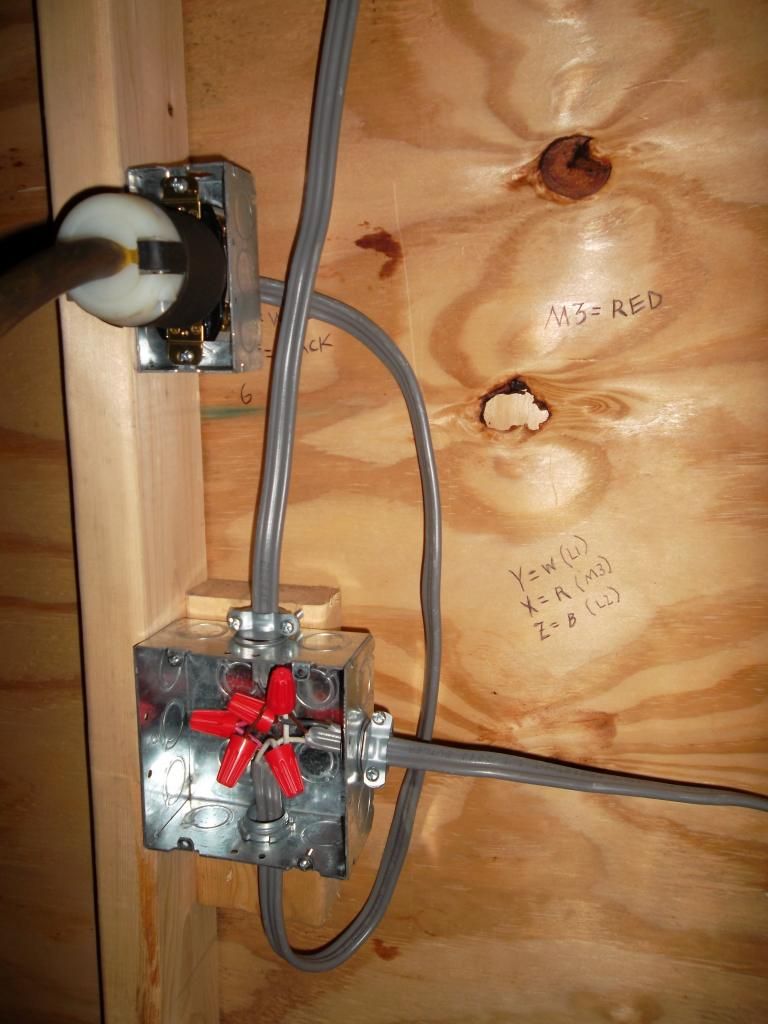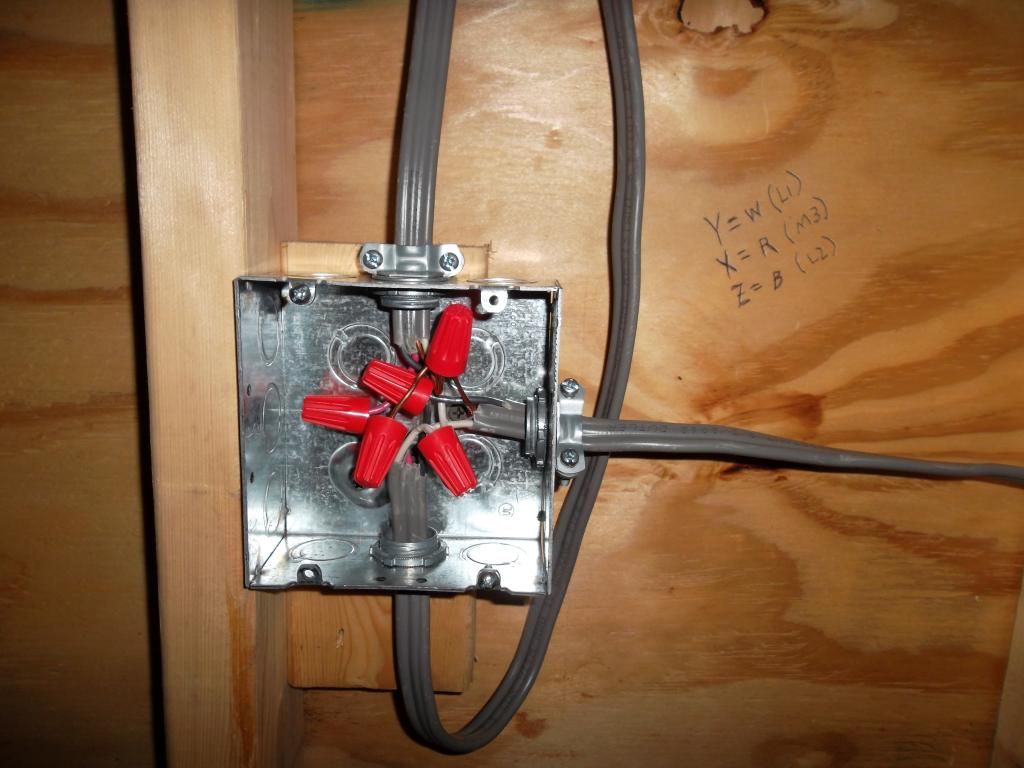Okay......attached are some pictures of my current setup. I thought I followed the phase converter wiring diagram correctly. I purchased a receptacle that suited the male 4-prong twist-lock plug coming from the mill. With the 20amp double pole breaker flipped, I went into the shop and heard buzzing (humming) coming from the phase converter. I assume this is normal because it was not loud, just sounded like electricity was present.
This set off alarms in my head right away. You make an assumption here that the phase converter is working normally, it might be or it might not be. What is bothersome is that listening for buzzing is not a form of diagnostics.
I turned the mill on and the little red light on the phase converter came on and it began clicking...the mill motor did not run. According to the troubleshooting guide the red light means the motor may be wired for 440v instead of 220v.
Possibly. You may have other issues though.
Will this be obvious to check if I take the motor plate off and peek inside?
Maybe maybe not. The motor should have a nameplate and connection information stuck to it someplace.
Please help...I hate electricity.
Honestly this is a good indication that a professional would be of help here. That is an electrician with solid industrial or three phase experience. Yeah it costs a bit but I'd feel better about it as I don't want to see anyone harmed at your house. It is very easy to wire up something that works yet is unsafe. Frankly I have no confidence in being able to instruct one properly over the Internet in a forum like this, thus the suggestion to hire an electrician.
A couple of things to note:
1. If you want to get serious about doing electrical work for machine control you need the tools to do so. That starts with a good DVM, or Digital Volt Meter. Sometimes these are called DMM, or Digital Multi Meters as modern ones have many functions built in. It is no different than owning a car, there is little sense in working on a car, DIY, if you aren't willing to invest in the proper tools.
2. I highly recommend variable frequency drives (VFD) for installation of small machines in a home shop. It is a better more modern way to power three phase motors these days and often are a cheaper solution. Plus you get several real world benefits from a VFD, this includes, phase conversion, variable speed and soft start.
3. Every NEMA documented plug and socket has a proper operating voltage and current. You really want to be sure that the connectors you are using are being used properly. More so you want to minimize the use of connectors, cord ends or what ever you want to call them. Being able to plug a machine into the wall is fine, but I've seen some really horrendous over usage of cord ends for everything from a wiring extension to a splice. On a machine tool this is especially problematic due to chips and coolant everywhere.
4. Pay special attention to grounding! Remember these machines are made of conductive metal.









































































